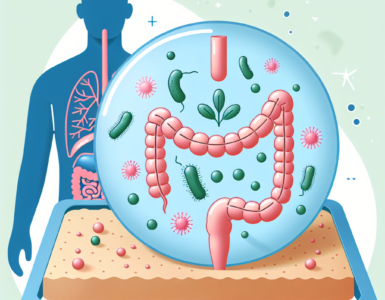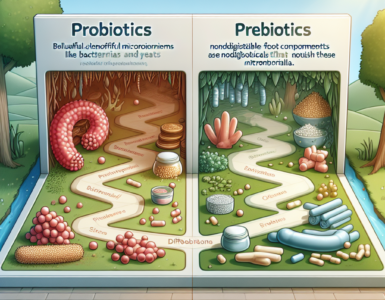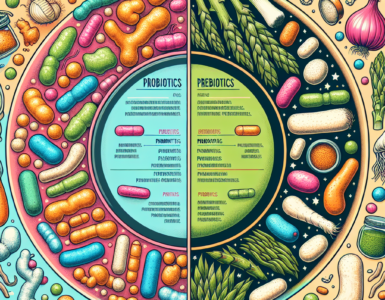Losing weight can seem like an insurmountable task, but with the right knowledge and approach, it can be achieved. This article will provide you with a comprehensive guide on how to lose weight effectively and sustainably. By understanding the science behind weight loss, creating a personalized diet plan, incorporating exercise into your routine, and making lifestyle changes for long-term success, you can achieve your weight loss goals and improve your overall health and wellbeing.
Understanding the Basics of Weight Loss
Before you can start your weight loss journey, it’s important to understand the basics of weight loss. At its core, weight loss is about creating a calorie deficit, which means that you are burning more calories than you are consuming. This can be achieved through a combination of diet and exercise. When you consume fewer calories than your body needs for energy, it will start to burn stored fat for fuel, leading to weight loss.
The Science Behind Weight Loss
Weight loss is a complex process that involves a range of biological and physiological mechanisms. When you consume food, your body breaks it down into its individual components, including carbohydrates, proteins, and fats. These nutrients are then either used for energy or stored for future use. When you create a calorie deficit, your body will start to use stored fat for energy, leading to weight loss.
However, it’s important to note that not all calories are created equal. The quality of the calories you consume also plays a role in weight loss. For example, consuming 100 calories of sugar is not the same as consuming 100 calories of vegetables. Sugar is quickly digested and can spike your blood sugar levels, leading to cravings and overeating, while vegetables are high in fiber and can keep you feeling full for longer periods of time.
Setting Realistic Goals
Setting realistic weight loss goals is crucial for success. It’s important to remember that weight loss is a gradual process, and it’s not realistic to expect to lose large amounts of weight overnight. Aim to lose 1-2 pounds per week, as this is a healthy and sustainable rate of weight loss.
It’s also important to set non-scale goals, such as improving your overall health and fitness levels. This can include things like reducing your cholesterol levels, improving your cardiovascular fitness, or increasing your daily steps.
Importance of a Balanced Diet
A balanced diet is crucial for achieving sustainable weight loss. This means consuming a variety of nutrient-dense foods from all the major food groups, including fruits, vegetables, lean proteins, whole grains, and healthy fats.
It’s important to avoid fad diets or cutting out entire food groups, as this can lead to nutrient deficiencies and make it difficult to sustain your weight loss long-term. Instead, focus on making small, sustainable changes to your diet, such as swapping out processed snacks for whole foods or incorporating more vegetables into your meals.
Remember, weight loss is not a one-size-fits-all approach. It’s important to find a plan that works for you and your lifestyle, and to seek the guidance of a healthcare professional if you have any concerns or medical conditions.
Creating a Personalized Diet Plan
Creating a personalized diet plan is essential for achieving your weight loss goals. This involves calculating your daily caloric needs, determining your macronutrient distribution, and incorporating nutrient-dense foods into your diet.
Weight loss can be a challenging journey, but creating a personalized diet plan can make it easier. By taking the time to understand your body’s needs and creating a plan that works for you, you can achieve your weight loss goals in a healthy and sustainable way.
Calculating Your Daily Caloric Needs
Calculating your daily caloric needs involves determining how many calories your body needs to maintain its current weight. This can be done using online calculators, or by consulting with a healthcare professional. Once you know how many calories you need, you can create a calorie deficit by consuming fewer calories than your body needs.
It’s important to keep in mind that creating too large of a calorie deficit can be harmful to your body. It’s recommended to aim for a deficit of 500-1000 calories per day, which can lead to a healthy and sustainable weight loss of 1-2 pounds per week.
Macronutrient Distribution
Macronutrients, including carbohydrates, proteins, and fats, are essential for maintaining overall health and wellbeing. It’s important to determine the appropriate distribution of these macronutrients for your specific needs. Generally, a balanced diet should consist of approximately 45-65% carbohydrates, 10-35% proteins, and 20-35% fats.
However, it’s important to keep in mind that everyone’s body is different, and what works for one person may not work for another. Some people may benefit from a higher protein or lower carbohydrate diet, while others may need more healthy fats in their diet. Experimenting with different macronutrient ratios can help you find what works best for your body.
Incorporating Nutrient-Dense Foods
In addition to focusing on macronutrient distribution, it’s important to incorporate nutrient-dense foods into your diet. This includes foods that are high in vitamins, minerals, and other essential nutrients, such as fruits, vegetables, whole grains, and lean proteins. By prioritizing these foods, you can ensure that you are meeting your nutritional needs while also creating a calorie deficit for weight loss.
It’s also important to pay attention to portion sizes and avoid overeating, even with healthy foods. While nutrient-dense foods are important for overall health, consuming too many calories, even from healthy sources, can hinder weight loss progress.
Meal Planning and Preparation
Meal planning and preparation is crucial for achieving your weight loss goals. By planning and preparing your meals in advance, you can ensure that you are consuming nutrient-dense foods in appropriate portions, while also avoiding unhealthy temptations. This can also save you time and money in the long run.
When planning your meals, it’s important to include a variety of foods to ensure that you are getting all the nutrients your body needs. This can include trying new recipes, incorporating different types of fruits and vegetables, and experimenting with different cooking methods.
Overall, creating a personalized diet plan involves understanding your body’s needs and finding what works best for you. By focusing on nutrient-dense foods, appropriate portion sizes, and regular physical activity, you can achieve your weight loss goals in a healthy and sustainable way.
Incorporating Exercise into Your Routine
Exercise is a crucial component of any weight loss plan. It not only helps to create a calorie deficit, but also has a wide range of health benefits, including improved cardiovascular health, increased muscle mass, and improved mood and wellbeing.
The Benefits of Regular Exercise
Regular exercise has a range of benefits for both physical and mental health. In addition to promoting weight loss, it can also reduce the risk of chronic diseases such as heart disease, stroke, and diabetes. It can also improve mood and mental wellbeing by reducing stress and increasing endorphins.
Moreover, regular exercise can help improve the quality of your sleep, boost your immune system, and increase your bone density, reducing the risk of osteoporosis.
Additionally, exercise can be a great way to socialize and meet new people. Joining a fitness class or a sports team can help you connect with others who share similar interests and goals.
Choosing the Right Type of Exercise
Choosing the right type of exercise is essential for achieving your weight loss goals. This will depend on your individual needs and preferences, but may include cardio, strength training, or a combination of both. Be sure to choose an exercise that you enjoy and that is sustainable for the long-term.
For instance, if you enjoy being outdoors, you may want to try hiking, running, or cycling. On the other hand, if you prefer working out indoors, you may want to try a fitness class or invest in some home gym equipment.
It’s also important to mix things up and try new exercises to prevent boredom and keep your body challenged.
Creating a Workout Schedule
Creating a workout schedule can help you stay on track with your exercise routine. Be sure to incorporate both cardio and strength training, and aim for at least 150 minutes of moderate-intensity exercise per week.
You may want to consider working out in the morning to jumpstart your day, or in the evening to unwind after work. Find a time that works best for you and stick to it.
It’s also important to give yourself rest days to allow your body to recover and prevent injury. Use these days to engage in light activities such as walking or stretching.
Staying Motivated and Tracking Progress
Staying motivated can be difficult, but tracking your progress can help. Set short-term goals and track your weight and measurements regularly. Celebrate non-scale victories, such as improved fitness levels or increased energy levels.
You may also want to consider finding a workout buddy or hiring a personal trainer to help keep you accountable and motivated.
Remember, exercise should be enjoyable and sustainable. Find activities that you love and make them a regular part of your routine. Your body and mind will thank you for it!
Making Lifestyle Changes for Long-Term Success
Weight loss can be a challenging journey, but making lifestyle changes can help you achieve long-term success. While fad diets and quick fixes may provide temporary results, they are often unsustainable. Instead, focus on making healthy changes that you can maintain over time.
Improving Sleep Quality
Did you know that sleep plays a crucial role in weight loss? When you don’t get enough sleep, your body produces more of the hormone ghrelin, which stimulates hunger, and less of the hormone leptin, which signals fullness. This can lead to overeating and weight gain.
To improve your sleep quality, aim for 7-9 hours of sleep per night, and establish a consistent sleep schedule. Avoid caffeine and alcohol before bedtime, and create a relaxing sleep environment by keeping your bedroom cool and dark.
Managing Stress and Emotional Eating
Stress and emotional eating can be major roadblocks to weight loss. When you’re stressed, your body produces cortisol, a hormone that can increase appetite and lead to overeating. Emotional eating, on the other hand, is when you use food to cope with negative emotions.
To manage stress and emotional eating, be sure to establish healthy coping mechanisms. Exercise is a great way to reduce stress and improve your mood. Mindfulness practices, such as meditation or deep breathing, can also help you stay calm and centered.
Building a Support System
Building a support system can help you stay motivated and accountable. When you have people in your life who support your weight loss goals, you’re more likely to stick with them. This can include friends, family, or a weight loss support group.
Consider finding a workout buddy who shares your goals, or joining a group fitness class. This can help you stay motivated and make exercise more enjoyable.
Celebrating Non-Scale Victories
While the number on the scale can be a useful tool for tracking progress, it’s important to remember that sustainable weight loss is about more than just the number on the scale. Celebrate non-scale victories, such as improved fitness levels or increased energy levels. These are signs that your hard work is paying off, even if the scale isn’t moving as quickly as you’d like.
Remember, weight loss is a journey, not a destination. By making healthy lifestyle changes and focusing on long-term success, you can achieve your goals and improve your overall health and well-being.
Conclusion
By understanding the basics of weight loss, creating a personalized diet plan, incorporating exercise into your routine, and making lifestyle changes for long-term success, you can achieve your weight loss goals and improve your overall health and wellbeing. Remember to set realistic goals, focus on nutrient-dense foods, and prioritize regular exercise. With commitment and dedication, you can achieve sustainable weight loss and improve your overall quality of life.
Disclaimer
Any changes to your routine should not be made using the content of this article. Always take care of your health and seek advice from healthcare professionals.
Note: The information provided in this article is for educational purposes only and is not intended to be a substitute for professional medical advice, diagnosis, or treatment. Always seek the advice of your physician or other qualified healthcare provider with any questions you may have regarding a medical condition.











